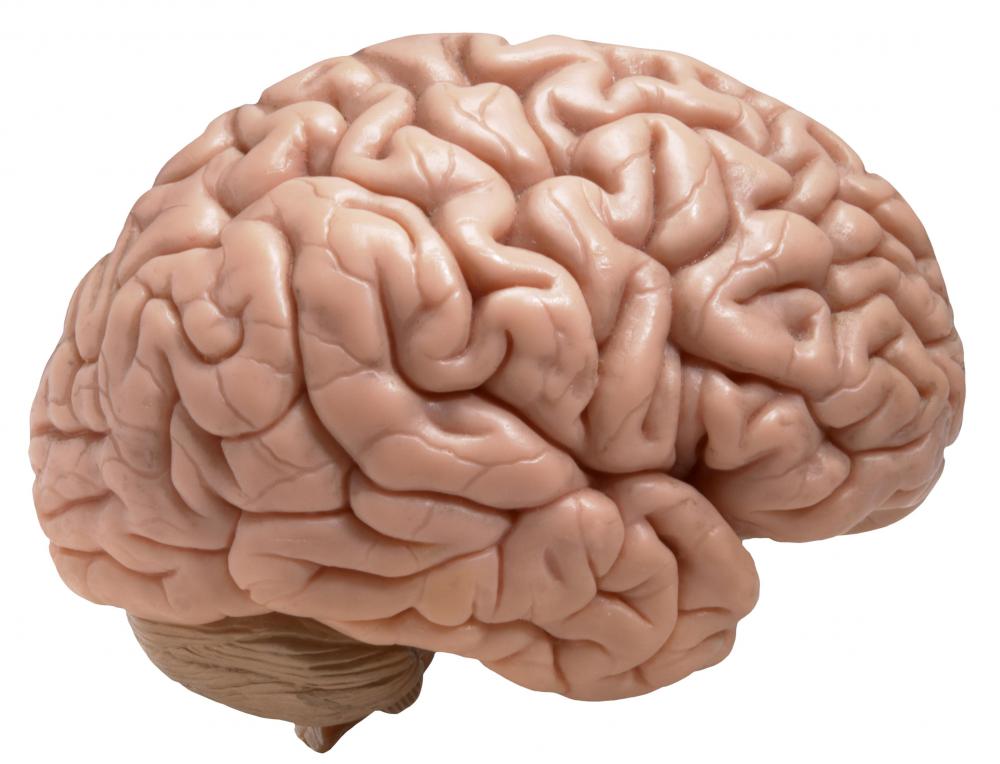At WiseGEEK, we're committed to delivering accurate, trustworthy information. Our expert-authored content is rigorously fact-checked and sourced from credible authorities. Discover how we uphold the highest standards in providing you with reliable knowledge.
What is Early Onset Parkinson's?
Early onset Parkinson's, or young Parkinson's, refers to Parkinson's disease symptom onset occurring in patients under the age of 50. Juvenile Parkinson's refers to symptom onset before the age of 20. Parkinson's disease is a degenerative neurological disorder characterized by tremors or trembling, poor coordination and instability, and bradykinesia, a condition causing slow, exaggerated movement and muscle rigidity. Parkinson's disease was first described in 1817 by physician James Parkinson, who called the disease "a shaking palsy."
The disease is progressive, meaning the symptoms worsen over time. Parkinson’s disease is not contagious, but some cases are thought to be hereditary, particularly in cases of early onset and juvenile Parkinson’s. The diagnosis of early onset Parkinson’s can be a difficult one, because symptoms may be ignored or concealed by a younger person. The condition may also be misdiagnosed, because, in the early stages of the disease, the symptoms are often very similar to a variety of other ailments. The characteristic tremors and poor coordination associated with this condition are commonly mistaken for the same symptoms associated with drug and alcohol misuse.

Parkinson’s disease, including early onset and juvenile, occurs when there is a lack of dopamine in the brain. Dopamine is a chemical produced in an area of the brain called the substantia nigra, and is a chemical designed to transmit signals to the corpus striatum, which in turn allows smooth, purposeful movement. If the dopamine-producing nerve cells are impaired or die, dopamine levels are reduced, meaning signals between the substantia nigra and the corpus stratum become abnormal and trigger inappropriate responses that cause impaired mobility, muscle movement and coordination.

Between 5 percent and 10 percent of people diagnosed with Parkinson’s have early onset Parkinson’s and, in these cases, the disease is commonly inherited because of a mutated gene. Symptoms tend to take much longer to worsen in early onset Parkinson’s cases, although the rate of progression varies greatly. The muscle rigidity normally associated with the disease is far less common in early onset Parkinson’s patients. Early onset Parkinson’s commonly presents with symptoms including micrographia, or tiny, cramped handwriting; bradykinesia; tremor; poor coordination; pain; and memory and concentration problems. Depression and anxiety disorders are common to most Parkinson’s sufferers but are more prevalent among early onset sufferers.

In the advanced stages of the disease, regardless of whether the initial diagnosis was made before the age of 40 or after, other symptoms and complications may arise. Patients may experience difficulty eating, swallowing and attending to personal hygiene. As the symptoms worsen, mobility decreases, meaning patients are at high risk of falls or of being confined to a wheelchair or bed. Dementia may also develop, but this is rare in patients suffering from early onset Parkinson’s disease.

While there is no known cure for Parkinson’s as of 2010, there are a wide range of drugs that may be of use in reducing the visible symptoms of Parkinson’s disease, as well as exercises designed to retain as much controlled mobility and movement as possible and to reduce tremor and rigidity. Each patient requires an individual treatment plan, because some people find that certain drugs designed to treat Parkinson’s cause unpleasant reactions, including but not limited to anxiety, depression, weight gain, vomiting, or even a worsening of symptoms.
AS FEATURED ON:
AS FEATURED ON:














Discuss this Article
Post your comments